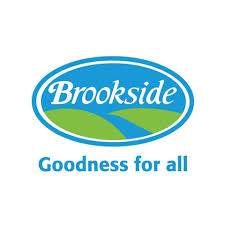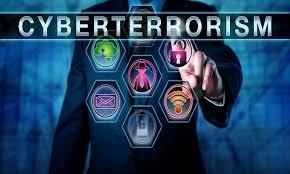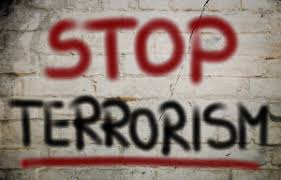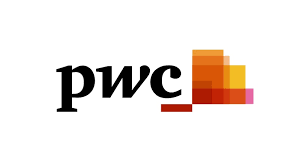
Ethics and social justice
Order Instructions:
For the Final Project for this course, select any government or nonprofit organization for which there is sufficient information to allow a thorough analysis of ethical or social justice issues. You may select your own organization if it is a government or nonprofit organization, but be aware of the need for scholarly objectivity and the need to protect confidentiality. Ethical researchers never begin any project with a hidden agenda or predetermined conclusion. If you do choose your own organization, do not identify it by name or precise location.
Your Final Project should include the following:
1) An introduction that describes the government or nonprofit organization, the setting, and any other information about the organization or related background that readers need in order to understand the organization and its ethical and social justice issues; a description of the ethical issues facing the organization and public administrators within the organization
2) An explanation of the ethical issues related to two or more of the philosophical theories that this course introduces
3) A summary of the major ethical challenges and conflicts of responsibility presented to individuals in the organization and to the organization as a whole
4) A summary of the strategies that the organization uses to maintain responsible conduct
5) An explanation of your recommendations for addressing the issues, including a rationale for your recommendations and an explanation of why they might be effective in addressing the issues, with consideration given to the possible involvement of guerrilla government employees
6) An analysis of the factors that would affect the implementation of the recommendations by using the ethical decision-making model
7) A description of the outcomes you would expect if the organization implemented your recommendations
8) An explanation of how the issues you raised are related to at least two of the four social justice themes (human rights, equality, liberty, and justice)
Your Final Project must demonstrate both breadth and depth of knowledge and critical thinking appropriate to graduate-level scholarship.
It must follow APA Publication Manual guidelines and be free of typographical, spelling, and grammatical errors.
The project should be 13–15 pages in length (double-spaced), not including the title page, abstract, and at least 8–10 scholarly resources, excluding any organizational brochures or other nonacademic sources.
Support your Final Project with specific references to all resources used in its preparation.
SAMPLE ANSWER
Ethics and social justice
Abstract
The National Education Association is the largest professional organization, and as well as labor union within the United States. It represents the public school teachers as well as many other support staff working in colleges and universities, including students who are studying to become teachers and the retired individuals. It is a volunteer based organization established in 1857, and was previously known as the National Teachers Association. It has undergone significant changes over the years such as including women as members, changing the name and generally improving its function. Unfortunately, there have also been negative changes, with the organization loosing focus of what is supposed to be its main function or reason for existence. This paper analyses the various ethical issues facing this volunteer organization which include oppressing the philosophical theories of republican and negative liberty, it is not for the good of all in terms of “equality”, and violating the rights of Libertarians.
Introduction
Within the United States, the National Education Association is the largest professional organization, as well as labor union, as it represents public school teachers alongside other support personnel, the faculty and staff from colleges and universities, students who are studying to become teachers, as well as the already retired members. This volunteer based organization was established back in 1857, during which it was known as National Teachers Association. However, in 1870, the name was reformed to National Education Association. Initially, women were not members, however before the change in name, the rule was changed and they were now allowed to also become members. The organization mainly relies on its members to finance the Association’s work. After this incorporation, the NEA has played a major role in ensuring many positive changes for teachers and students. The purpose of the union supporting these changes was so they could grant people human and civil rights. For example, they advocated against American Indians’ forced assimilation and child labor. They were able to stop these by using research to prove to the states’ legislatures that such institutions were negatively impacting children’s education (NEA, 2011). At this era, the NEA was indeed a true advocate for children.
In the 1920s, the United States experienced a period of teacher shortage, and since this was part of the organization’s role, NEA researched on the possible reasons for such an outcome. The results of their research showed that being overloaded with work, poor wages, and having many students of different ages, some of whom could not speak English, were the main reasons for many abandoning the teaching sector. Therefore, NEA recommended to the government that the situation may be salvaged when a Department of Education is put in place. This department would have a role of regulating school curriculum, training teachers, and hence improving the quality of education offered to the students. For almost ten years after this situation, This organization tried to increase the salaries of teachers so as to ensure they were comfortable with their work. Soon, the Depression came into full force, and the organization signed for membership into the Federal Advisory Committee on the Emergency in Education section. The main purpose of this committee was to ensure that schools received assistance since it routed federal aid towards them (NEA, 2011).
Later, in 1926, NEA formed yet another committee with the American Teachers Association (ATA), previously known as National Association of Teachers in Colored Schools (NATCS). This Joint Committee was aimed towards justice. Its primary goal was to improve the quality of education offered for blacks. This would be achieved through various objectives such as accrediting and acknowledging black schools. This was not all, the NEA also made a brave step by taking a stance against the Japanese/ American internment camps. During this time, soldiers were prohibited from leaving their camps in search of further education. However, after the NEA greatly supported the G.I Bill of Rights, soldiers who wanted to further their education were enabled to do so after the war. According to statistics, this Bill of rights paved room for more individuals to attend college, a number that had never been witnessed before (NEA, 2011). Higher education became for all, and not just for the wealthy people. As a result of the organization’s continued advocacy for the minorities, a Bilingual Education Act of 1968 was passed. In 1984, NEA also triggered the creation of a federal retirement equity law (NEA, 2011).
Ever since the inception of the NEA, ethical and social justices have been the major drivers. This is still the case, as noted by how the organization supports Minority Community Outreach, Priority Schools Campaign, and how they encourage the reform of Social Security Offsets. However, it has recently been on the spotlight for various reasons. They are discouraging merit pay, are against the No Child Left Behind Act, and are also opposing the charter schools. The National Education Association seems to have changed from what was its earlier stance regarding the educational excellence and advocacy. It is now turning into a powerful political union.
The ethical and social justice issues facing this organization include educational reform and access to education. Improving the quality of education is a major concern for most individuals. However, for this to happen, an educational reform must take place. Ever since this organization lost focus, its role in the education department has also become confusing. They are no longer advocating for children to get education, or to improve the quality of education. As a matter of fact, all the three Acts mentioned above, that NEA is against, are all reform ideas supposed to improve the quality of education for all children. The NEA is a liberal organization; however the same cannot be justified for its members. This is because they are being influenced by the conservative thoughts. The NEA, therefore, is against education reform, and so are the members. Unfortunately some of the members are not aware of what the organization’s views are. They have not yet realized that the union leaders, who are mainly said to be liberal, are at the fore front in making biased decisions.
Issues Related to Philosophical Theories
No Child Left Behind
The No Child Left Behind Act is one that will ensure schools become accountable. It is relative to the Theory of Action, one which enhanced educational reform in Texas, while the leader was Governor George W. Bush. This theory strictly requires accountability, transparency, and choice. The No Child Left Behind Act involves a plan which expects any member within the education field to be accountable. It also requires any data and information about schools, test results, performance analysis and others, to be availed to anyone who needs it, including parents (Bland, 2014). In this plan, parents should be given more choice in determining their child’s education. By implementing this Act, the National Education Association became worried that the government would get an opportunity to shame or embarrass them by harassing them. Additionally, they disagreed with the government on empowering parents as they felt that it would inhibit their roles as teachers. The Act is designed to decrease some of National Education Association abilities of controlling education and politics, thus the organization’s aim was to restrain accountability and parental involvement. Hence, propaganda to misinform the public was developed. The organization sabotaged the supporters of the No Child Left Behind Act at town hall meetings by planting their leaders amongst them to interrupt speakers with aggressive comments and then denounce the idea (Smyth, 2008).
Merit Pay
A poll was prepared by the Democratic Leadership Council to take statistics on the number of democrats, republicans, and independents who would support the merit pay for teachers. The results were overwhelming with 60% democrats, 65% republicans, and 73% independents (Hoff, 2008). This is proof that the country indeed has a great desire to make the change However; this is a threat to unions because membership enrollments will be affected if teachers quit the sector as the union will lose money. An issue to be noted is how most of the teachers who are members of the union are actually being forced to pay up the union dues, and more of them do not even want to be member’s anymore. The union subjects teachers from different states to unfair conditions. For instance, they are all expected to pay a uniform amount, despite the fact that their payments may differ from one state to the other. The performances of teachers also differ, and thus they cannot all be subjected to the same payments. Some are way better and more experienced than others. Therefore, having a uniform payment will hinder teachers from wanting to aim for higher levels since there will be no distinction (Wright, 2003). In this field, there are many excellent teachers who are working alongside the ineffective and those who do not care. This, however, does not affect their payments as it is still the same for all of them.
Charter Schools
In the present environment, the National Education Association and the American Federation of Teachers (AFT), do not pay great attention to the under-performing traditional schools. This is because by doing so, they will not be getting any benefits and they also do not want the public to see what is happening. However, if the under performing institution is a charter school, all focus will be on it (Prothero, 2014). This is a very unfortunate situation because the country needs diverse schools to ensure that the needs of diverse students are also met fully. As a matter of fact, the National Assessment of Educational Progress (NAEP) data pointed that the learning of minorities has increased far more in private and religious schools, compared to the situation in traditional schools (Shober, Manna & Witte, 2006). This is because there are more minority enrollments in charter schools than in traditional schools. There is also proof that charter schools thrive because they are not controlled by unions, while traditional schools controlled by unions do not last. It has also been noted that charter schools empower teachers and principals, while unions are against such an action. To effectively hinder the action of charter schools in the states, the union tagged on some political strings so they could get funding for the high priced smear campaigns meant to undermine charter schools (Antonucci, 2010).
Ethical or Social Justice Issues in Terms of Philosophical Theories
By resisting the No Child Left Behind Act, the NEA is also oppressing the philosophical theories of republican and negative liberty. There is a violation of the republican liberty of the institution of schools since there is a greater chance that the NEA will keep on interfering and taking steps to mitigate the progress of the NCLB. The negative liberty will always be in jeopardy since the institution of education will never be free to make any choices without being influenced by the NEA in the name of “equality” (Wright, 2003).
This union formed by teachers is supposed to benefit all the people involved, including the children. The idea of teachers being given an equal pay can be related to the positive theory of value and action, therefore it can also be given a utilitarian thought. However, since it does not consider children, it is not for the good of all in terms of “equality”.
The Union’s opposition to charter schools may be viewed by Libertarians as a violation to their rights. Parents must always have the freedom of choice, especially when it comes to deciding what may be best for their children, including deciding which schools to take their children (Wright, 2003). Therefore, the NEA has a moral obligation of ensuring this right is upheld, especially since it is basically an education association. Hence, parents literally own the schools and should choose according to their preference in what is known as “libertarianism”.
Major Ethical Challenges and Conflicts of Responsibility
Ethical behavior, within an organization culture can only be instilled through internal and external controls. Internal controls are achieved by promoting ethical conduct through encouraging professional development within the members. It is important for all members of an organization to be informed of the new ways of being ethic, and also teaching them to identify what is right from wrong. Professional development is one way of achieving this outcome since members of the organization will improve their skills as well the general knowledge of ethics. External control focuses on policies and laws. These formed policies and laws show the members of an organization what is right and expected of them, and what is wrong that they should avoid at all costs. If an organization can achieve a balance of these two controls, then a positive outcome should be expected. It is important to first look at the individuals involved as well as the organization as a whole. This consideration defines the policies formed within an organization. Policies are basically a definition of what one can do and cannot do. Hence, the leaders of the organization should be elected to create and uphold these policies (Prothero, 2014). This means that they should be individuals who can model the appropriate behaviors in members. The organizational culture affects the policy making process, and at times it can be more effective than the internal and external controls, as well as the organization’s accountability structure. Hence, the leader is the most influential individual and has the capability of impacting the culture, which is very powerful on its own and can instill ethical behavior amongst members (Shober, Manna & Witte, 2006).
Therefore, this organization is greatly challenged by the fact that its leaders are not actually the most appropriate individuals for the position. They are confused about what their true responsibility to the organization is all about. This is why the union can presently be misinterpreted for a political organization. The leaders are misdirecting the members, forcefully expecting money from them, but still the actions are not for the benefits of all involved. Another major ethical challenge is that the organization has lost focus of what is ethical and unethical. Instead of advocating for things that will benefit the children, avoid their discrimination, and ensure teachers are providing quality education; the union is focused on prohibiting anything that will not benefit teachers positively. As a matter of fact, they are against acts that are supposed to promote education for children and improve quality. Since the union is supposed to promote such acts, it is clear that they are being unethical in their actions.
Summary of Strategies Used by NEA to Maintain Responsible Conduct
This organization uses many strategies to maintain responsible conduct, despite the fact that it has many ethical and social justice issues. First, it has leaders to take control of the various activities involved within the organization. Without leaders, members of an organization would not be capable of staying together especially since they would be disagreeing, there would be no one to have the final say and so on (NEA, 2011). Thus, the organization has appointed different leaders for all sections to ensure that everything runs smoothly. These leaders are also supposed to lead others in the right way. Second, this organization has for long depended on research projects to support its advocacy. If it needs to oppose or support a certain act, it conducts research and uses the results as presentation to the government, showing why they should or should not implement the change given (NEA, 2011). This makes their argument to be stronger as it proves that they are using the right path by being ethical and thus doing the right thing for all involved.
Recommendations for Addressing the Issue
The National Education Association is opposing educational reform, a factor that is greatly affecting many children in many ways. First, exposure to high quality schools is being limited since their action is advocating for the continued mediocre schools. Therefore, children will never get the opportunity of enjoying high quality education in case their opposition succeeds. Their opposition also discourages more children to get enrolled in schools, therefore it also impacts the education of many more. The reason for this negative action by the NEA is that most of its members are unaware of what is going on and they also do not really know the truth behind the existence of this organization. Therefore, my first recommendation is that the Department of Education should make great effort in designing programs that will enlighten the members of the National Education Association (Wong, Wong & Ngo, 2012). This effort should be designed in a similar way to the No Child Left Behind, by applying the Theory of Action (Bland, 2014). This recommendation is very important as everything will change about the organization once the members have a clear idea of what they are supporting. Currently, only a few members know what the organization leaders have been trying to do. The second recommendation is that NEA should finally own up and start being transparent with its data. By hiding things from the people, the organization is not helping the trust situation that it has with the public. This will be a step towards curbing the claims that members are being misled. Transparency is the first step towards accepting mistakes and fixing the situation. This is because the organization’s leaders will not be tempted to act unethically as they will know that eventually they will have to answer for their mistakes.
Third, the NEA leaders should start being accountable for the organizations actions, and ensuring that teachers have a choice of whether they want to become members or not. By being accountable, leaders will know that any negative impressions given by the organization will be linked to them. Therefore, they will be more careful in preparing their activities, and will not only focus on selfish topics that are aimed towards benefiting them solely. Every individual has a freedom of choice, including teachers. Hence, it is immoral to force teachers to join the union just for the sake of getting finances from them. Fourth, school board members and parents should also get involved with the National Education Association. Without them, schools would be nowhere today, thus it shows they have power over the NEA. Teachers may always be tempted to favor their section only, which is why it is always important to have another group who will be representing the children.
If teachers had a clear view of the benefits they could receive as a result of merit pay, the importance of the data that encouraged the development of the NCLB, the many possibilities of charter schools, and also the reasons why NEA is opposing these changes, then the educational reform would start internally (Hoff, 2008). The recommendations above are all targeting the improvement of knowledge that many people have about the NEA. Therefore, once implemented, they are all expected to be effective in handling the ethical and social justice issues experienced by the National Education Association.
Factors Affecting the Implementation of the Recommendations mentioned
Just as with many business proposals, these recommendations will also require a lot of financing. This is why it may be difficult for the implementation of the first recommendation by the Department of Education. Currently, the organization is already supporting many people financially and politically, therefore it will be very complicated for it to still be able to find leaders who can develop a similar effort (NEA, 2011). As a result of a poor economy, the department may be forced to focus on issues that are more urgent and give this recommendation lesser priority. Another factor is how the NEA is already a powerhouse; hence, it means that the implementation of these recommendations may be hindered at various points, especially since they are supposed to create changes. Therefore, it will be very important for these reformers to be courageous; otherwise they will not make it. Parental attitudes may also threaten the implementation of the recommendation unless they are encouraged to meaningfully take part in the education of their children.
Outcomes
If these recommendations were implemented, the teachers will be given the power to make reformations on their own. As a result of this power, they will feel encouraged to be better professionals as they will hope for better payments and other benefits. This step, in turn, will also influence the quality of education offered in schools and students will feel more comfortable in the environment. Teachers will also gain relief after they understand that the NCLB is indeed a positive act, and it is not the government’s way of going against them as they had been initially made to believe. After their implementation, professional development will turn out to be a positive event and not how it previously was a negative event. Student learning will also be increased for the diverse students, as these implementations will encourage the development of many more charter schools.
NEA’s Opposition to Education Reform Threatens Equality, Liberty, and Justice
Justice is related to the actions of an individual as well as their moral implications. Hence, the decisive factor here is to even out the level of welfare to all individuals involved (Wong, Wong & Ngo, 2012). Distributive justice refers to how even the outcomes are while considering the organizational decisions and processes. Some individuals see that expectations and perceptions of fairness are parallel to the outcomes. This justice can be noted in the No Child Left Behind educational improvement act. It comes as a result of the actions of individual, that are designed to equalize the learning field and hence lead to the wellbeing of students. This action, however, is being threatened by the NEA.
Liberty is often considered to be a state of freedom, whereby one has the ability to act and think independently, as well as the capability of coming and leaving at one’s pleasure. It can also be considered as freedom to leave an unjust union, and be able to participate in more privileged activities without being intruded. The NEA is also opposing this by forcefully expecting teachers to become members of the organization.
Political liberalism is basically an idea that humans are indeed good and have the capability of governing themselves, however they still pick a government to lead them. This connection between liberty and political liberalism supports freedom of an individual, most specifically the individual liberty, human rights and many others. Political liberals are usually more focused on autonomy, equality, and neutrality. Therefore, all these should be used together to end up with an effective union.
Conclusion
The National Education Association has indeed deferred from its main purpose of existence. Its focus currently is very different from what it used to focus on many years ago. The people’s reaction to it previously and currently is also very different. Today, many people have lost hope in this organization as they now feel like it is a political organization and not the voluntary organization aimed towards fighting for the human rights of the members of the society. This organization has an opportunity of once again becoming what the people need. All it needs to do is to change its course, and finally focus on its purpose for existence. This should involve fighting for the rights of children to access education, fight for a high quality education system, and also to fight for the teachers so they can receive better salaries in future.
References
Antonucci, M. (2010). The long reach of teachers unions, using money to win friends influence policy. Education Next,10(4), Retrieved from http://educationnext.org/the- long-reach-of-teachers-unions/
Bland, A. (2014). No Child Left Behind: Why Race based Achievement Goals Violate The Equal Protection Clause. Berkeley La Raza Law Journal, 2459-80.
Hoff, D. J. (2008). Obama Slips Merit Pay Into Larger Plan on Schools. Education Week, 28(5), 23-25.
NEA, Initials. (2011). Our history. Retrieved from http://www.nea.org/
Prothero, A. (2014). In Calif. and Elsewhere, Unions Seek Inroads Into Charter Schools. Education Week, 34(3), 6.
Shober, A. F., Manna, P., & Witte, J. F. (2006). Flexibility Meets Accountability: State Charter School Laws and Their Influence on the Formation of Charter Schools in the United States. Policy Studies Journal, 34(4), 563-587. doi:10.1111/j.1541-0072.2006.00191.x
Smyth, T. (2008). Who Is No Child Left Behind Leaving Behind?. Clearing House, 81(3), 133-137.
Wong, Y., Wong, C., & Ngo, H. (2012). The effects of trust in organisation and perceived organisational support on organisational citizenship behaviour: a test of three competing models. International Journal Of Human Resource Management, 23(2), 278-293. doi:10.1080/09585192.2011.610966
Wright, R. E. (2003). Difficulties in Marketing the Concept of Merit Pay for Primary and Secondary Teachers. Research For Educational Reform, 8(3), 38-45.
We can write this or a similar paper for you! Simply fill the order form!












